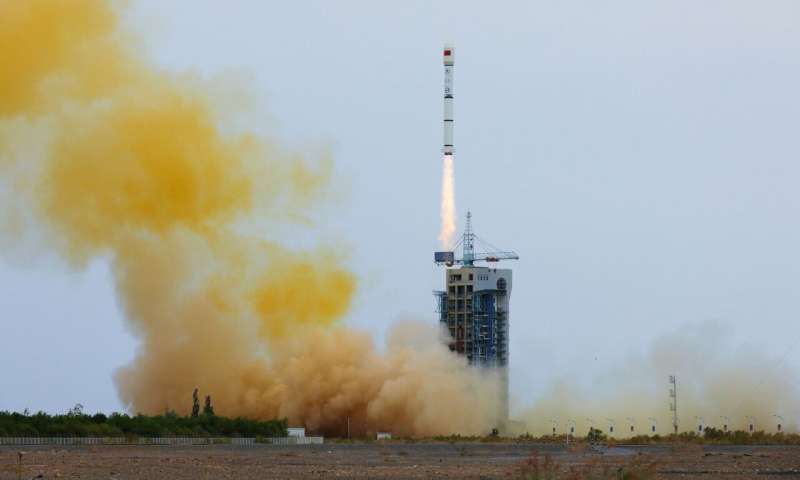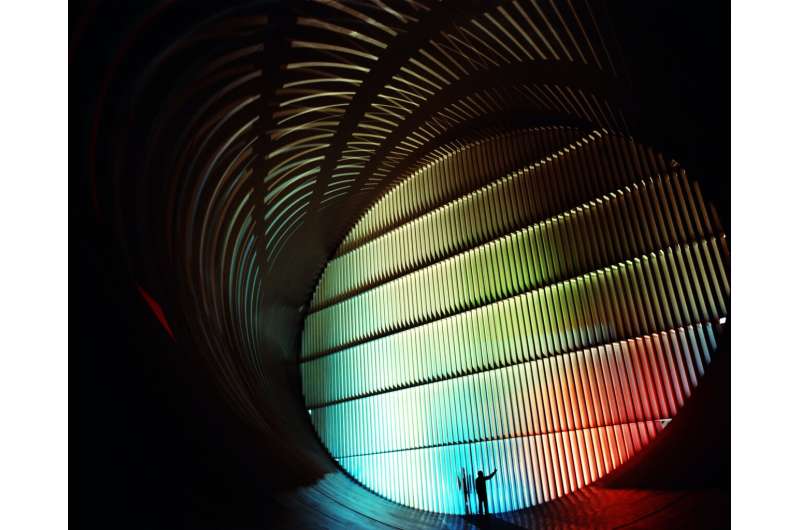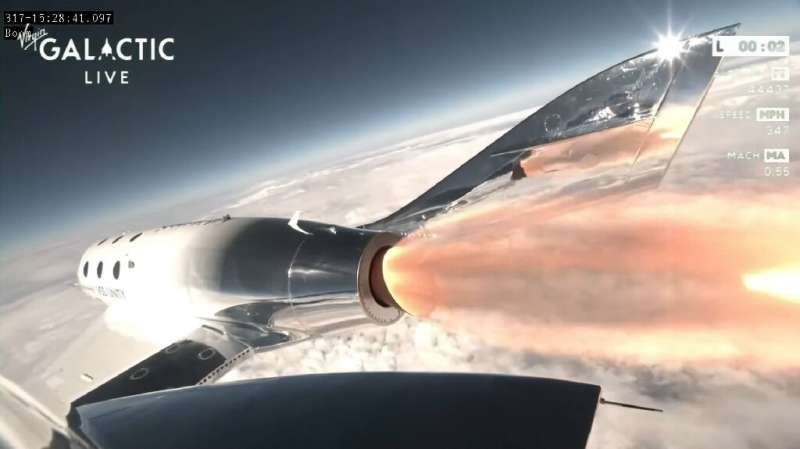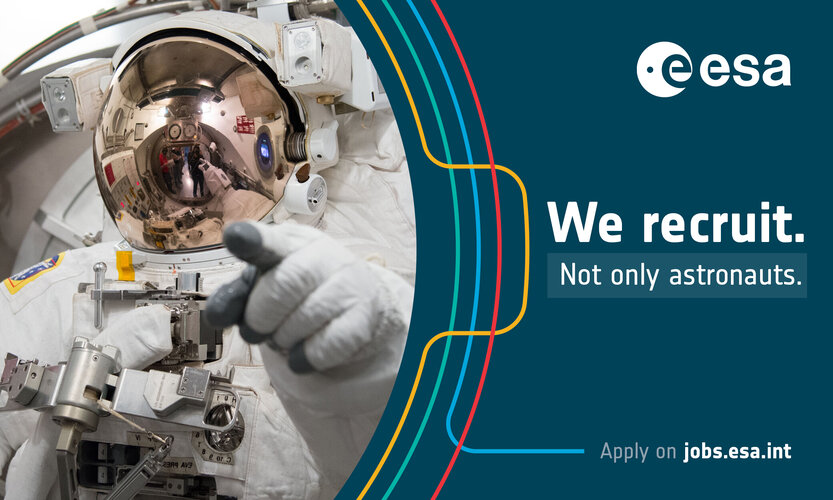
Copernical Team
New NASA Artemis instruments to study volcanic terrain on the moon

As part of NASA's regular cadence of robotic lunar missions through Artemis, the agency has selected a new scientific payload to establish the age and composition of hilly terrain created by volcanic activity on the near side of the moon.
The DIMPLE instrument suite, short for Dating an Irregular Mare Patch with a Lunar Explorer, will investigate the Ina Irregular Mare Patch, discovered in 1971 by Apollo 15 orbital images. Learning more about this mound will address outstanding questions about the evolution of the moon, which in turn can provide clues to the history of the entire solar system.
DIMPLE is the result of the third annual proposal call for PRISM (Payloads and Research Investigations on the Surface of the Moon), which sends science investigations to the moon through a NASA initiative called CLPS, or Commercial Lunar Payload Services. This PRISM call was the first that allowed proposers to choose and justify a particular landing site for conducting high-priority lunar science investigations.
"This commercial payload delivery initiative is helping to provide a burst of lunar science and exploration," said Nicola Fox, associate administrator for science at NASA Headquarters in Washington.
China has begun launching its own satellite internet network

Since 2019, Elon Musk and SpaceX have led the charge to create high broadband satellite internet services. As of May 2023, the Starlink constellation consisted of more than 4,000 satellites operating in Low Earth Orbit (LEO) and roughly 1.5 million subscribers worldwide. Several competitors began launching constellations years before Starlink began, and several companies have emerged since. This includes HughesNet, OneWeb, and Amazon's Kuiper Systems. But Starlink's latest challenger could be its most fearsome yet: a company in China backed by the Beijing government.
On Sunday, July 9, a prototype internet satellite was launched aboard a Long March 2C carrier rocket from China's Jiuquan Satellite Launch Center in Inner Mongolia. The satellite has since entered a predetermined orbit, where it will conduct several tests to validate the broadband satellite technology.
NASA's first new wind tunnel in 40 years will turn science fiction to fact

Flying cars. Space tourism. Safe reentry for astronauts coming back from Mars.
These technologies are still science fiction, but some won't be for much longer, according to Charles "Mike" Fremaux, NASA Langley Research Center's chief engineer for intelligent flight systems.
To test these concepts, particularly in regard to public and military safety, NASA Langley is building its first new wind tunnel in over 40 years. The NASA Flight Dynamic Research Facility, a project Fremaux has been pursuing for 25 years, will replace two smaller wind tunnels that are around 80 years old. The center's most recent and largest, the National Transonic Facility, was built in 1980.
"These facilities are really kind of tailor-made for doing a lot of that work," he said at a presentation at the Virginia Air & Space Science Center in Hampton on Tuesday. The talk was part of NASA Langley's Sigma Series community lectures.
"That's not our traditional wheelhouse. We haven't tested anything with a propeller on it in decades."
That's because many new craft will depend on electric vertical takeoff and landing, or "eVTOL," technology.
Virgin Galatic's next spaceflight will include sweepstakes winners

Virgin Galactic's next spaceflight will include a mother-daughter duo from the Caribbean who won their tickets in a sweepstakes contest, as well as an 80-year-old former Olympian.
The company founded by British billionaire Richard Branson flew its first paying customers, members of the Italian Air Force, last month—a long awaited achievement that put it back on track in the emerging private spaceflight sector.
Its next mission "Galactic 02,' is planned for August 10 from Spaceport America, New Mexico, the company said in a statement.
Space awaits you! More ESA vacancies open for applications

In March, we announced that 2023 would see the publication of over 300 vacancies at ESA. New vacancies keep being published as we continue our search for talented and motivated professionals to join our teams across Europe and support our mission of the peaceful exploration of space for the benefit of everyone. Could ESA be the next step in your career? Read more to find out!
NASA's GISTEMP Confirms June 2023 as the Record-Breaking Warmest Month
 NASA recently disclosed that June 2023 was the most thermally elevated June recorded in history. This information has emerged from NASA's meticulous global temperature analysis, conducted via its Goddard Institute for Space Studies (GISS), New York.
The GISTEMP, an acronym for NASA's Global Land-Ocean Temperature Index, has facilitated this groundbreaking finding. The process of GISTEMP is
NASA recently disclosed that June 2023 was the most thermally elevated June recorded in history. This information has emerged from NASA's meticulous global temperature analysis, conducted via its Goddard Institute for Space Studies (GISS), New York.
The GISTEMP, an acronym for NASA's Global Land-Ocean Temperature Index, has facilitated this groundbreaking finding. The process of GISTEMP is NASA-ISRO earth observing satellite coming together in India
 Built on opposite sides of the planet, the NISAR satellite will deepen understanding of climate change, deforestation, glacier melt, volcanoes, earthquakes, and more.
Two major components of the NISAR satellite have been combined to create a single spacecraft in Bengaluru, India. Set to launch in early 2024, NISAR - short for NASA-ISRO Synthetic Aperture Radar - is being jointly developed
Built on opposite sides of the planet, the NISAR satellite will deepen understanding of climate change, deforestation, glacier melt, volcanoes, earthquakes, and more.
Two major components of the NISAR satellite have been combined to create a single spacecraft in Bengaluru, India. Set to launch in early 2024, NISAR - short for NASA-ISRO Synthetic Aperture Radar - is being jointly developed Low altitude flights study everyday emissions
 Often research associated with air quality and pollution prioritizes transportation - especially car emissions - as an area of focus. However, many urban areas have less pollution from motor vehicles than in the past. That's why scientists leading the AEROMMA project this summer are focused on gathering data on other anthropogenic, or human-based, pollution sources.
The AEROMMA project - A
Often research associated with air quality and pollution prioritizes transportation - especially car emissions - as an area of focus. However, many urban areas have less pollution from motor vehicles than in the past. That's why scientists leading the AEROMMA project this summer are focused on gathering data on other anthropogenic, or human-based, pollution sources.
The AEROMMA project - A HawkEye 360 raises $58M for satellite architecture and data science acceleration
 HawkEye 360 has secured $58 million in a new round of funding. This financial backing, designated as the Series D-1 funding round, is set to be channeled into the development of innovative space systems and expanding analytics which are pivotal in supporting high-value defense missions.
Leading the Series D-1 funding round were funds and accounts managed by BlackRock (NYSE: BLK). In additi
HawkEye 360 has secured $58 million in a new round of funding. This financial backing, designated as the Series D-1 funding round, is set to be channeled into the development of innovative space systems and expanding analytics which are pivotal in supporting high-value defense missions.
Leading the Series D-1 funding round were funds and accounts managed by BlackRock (NYSE: BLK). In additi GMV teams with Galician Innovation Agency to fortify CIAR with advanced cybersecurity system
 Leading global technology firm GMV has forged a euro 1.6 million contract with the regional government of Galicia's Galician Innovation Agency. The ambitious agreement is for the development of a robust cybersecurity system, specifically designed to detect radiofrequency signal jamming in the vicinity of the Rozas Airport Research Center (CIAR). The primary objective of this system is to provid
Leading global technology firm GMV has forged a euro 1.6 million contract with the regional government of Galicia's Galician Innovation Agency. The ambitious agreement is for the development of a robust cybersecurity system, specifically designed to detect radiofrequency signal jamming in the vicinity of the Rozas Airport Research Center (CIAR). The primary objective of this system is to provid 
